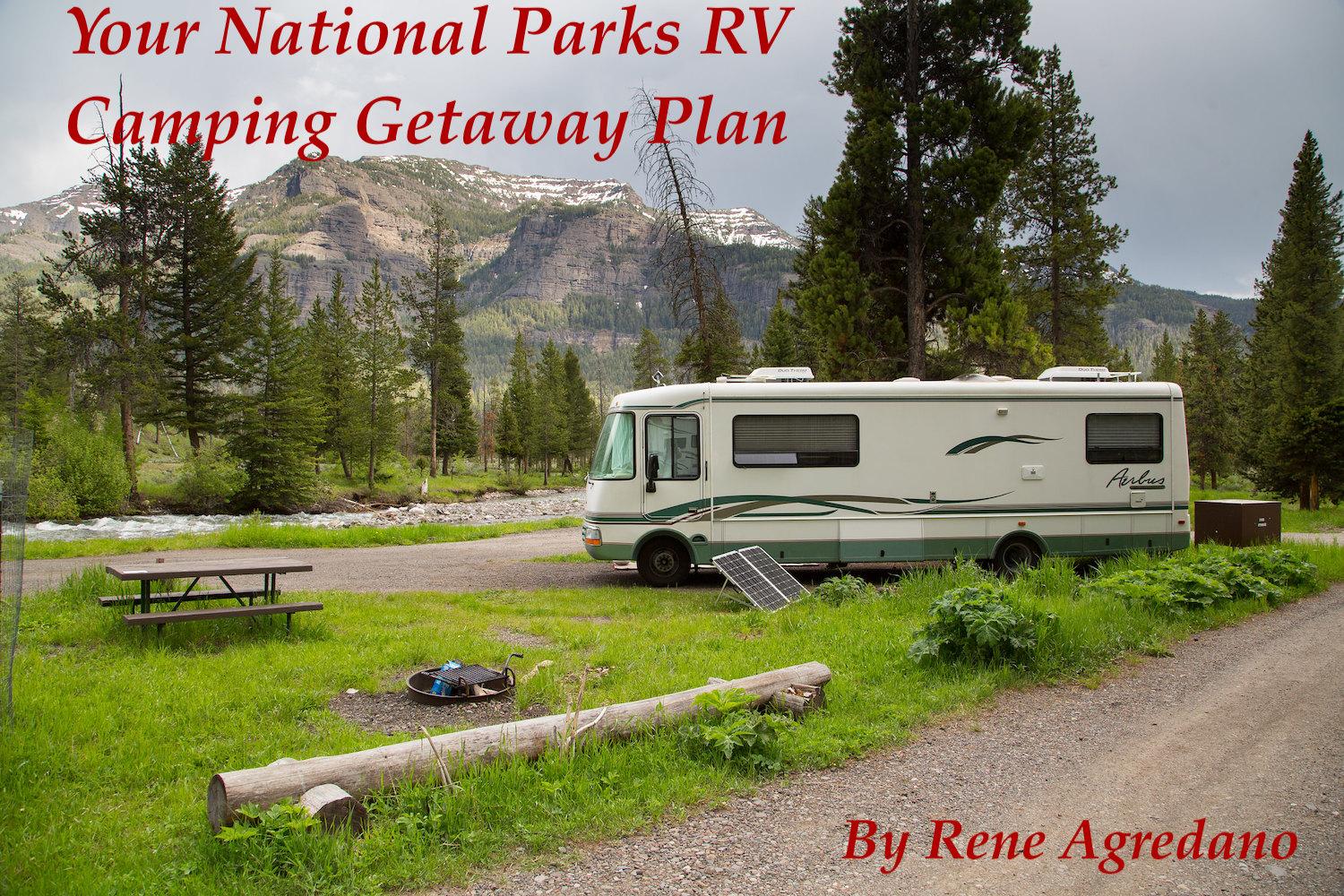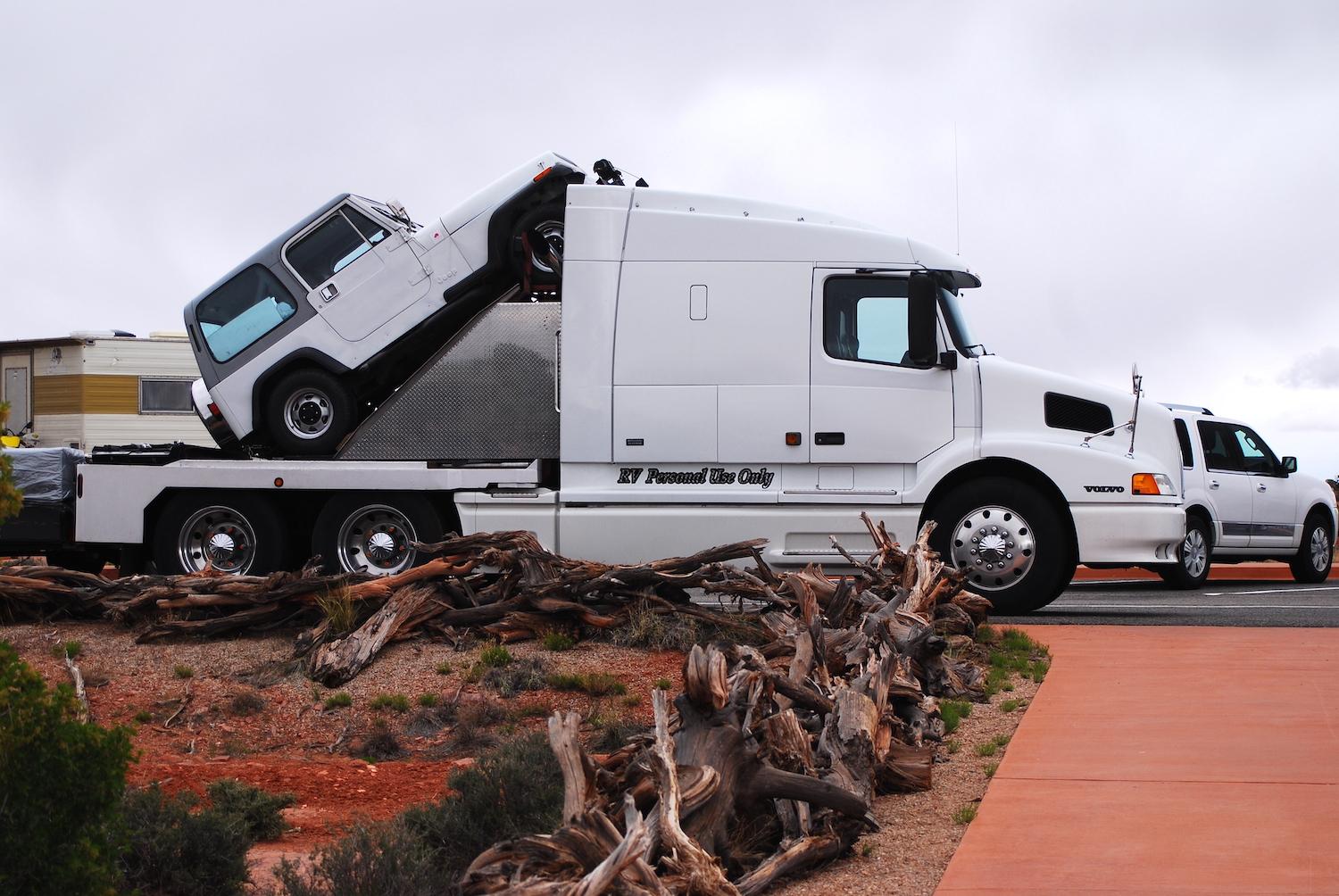
More people are leaping into the RV lifestyle every year. They’re exploring national parks in comfort, but all that extra traffic makes spontaneous road trips to the parks largely a thing of the past, at least during the busy summer season. With more rigs on the road than campsites to accommodate them, RVers like me are constantly competing for a scant number of RV-friendly campsites. I learned this lesson the hard way when I arrived at Yellowstone without reservations.
No Reservation, No Luck
On a frigid October afternoon, we rolled into Yellowstone’s Madison River campground for the first time in ten years. Fueled by a desire to revisit the location where our previous dog enjoyed his last days on Earth, we arrived without reservations, just like the previous time. “Got any sites for a 30-foot RV?” I asked a check-in clerk. The weary-looking staffer peered up from her reading glasses and sighed. “No reservation? Probably not.” She gave the roster a cursory glance, but of course she was right. Not even our guardian angel dog could orchestrate a campsite score at America’s second-most visited national park. We rolled away thinking how times have changed for RV camping in national parks.
The mobile lifestyle exploded during the 2020 pandemic year, and it hasn’t slowed down yet. In 2021, the RV industry saw a record 11.2 million households buying into RV ownership. That’s a 26 percent jump since 2011, when 8.9 million people bought their first rig. These figures don’t include the millions of pre-owned motorhomes, truck campers, travel trailers, toy haulers, and camper vans streaming into national parks all year long. Despite this era of rising fuel prices and inflation, there’s no telling when or if RVing’s popularity will slow down. But as prices for other methods of travel increase, too, more people will likely buy into the relatively low cost of vacationing and living in RVs. Finding RV-friendly campsites at national parks is only going to get tougher, but there are some steps you can take to enhance your odds of landing one.

Not every national park campground can fit all sizes of RVs/Kurt Repanshek file
First, Know Your RV Measurements
Starting this year, RVers at Gulf Islands National Seashore are discovering that size is everything when camping in national parks. Those RVers who ignore campsite length restrictions and trample vegetation and terrain with their rig will pay a price when park rangers begin enforcing maximum RV size limits to protect natural resources. Unfortunately for many RV owners, the average length of campsites in national park campgrounds is around 30-feet long. This figure comprises the entire RV unit from end-to-end, including tow or towed vehicle. New RVers tend to learn the hard way that many national park campsites just can’t accommodate newer, bigger motorhome and travel trailer models rolling off RV assembly lines. Even a couple of feet make a huge difference in where an RV can go. Smaller is just better for exploring national parks. From the front bumper to rear bike rack, rooftop A/C to where the rubber meets the road, if you own an RV and you want to camp in national parks, here’s what you need to do for a successful experience:
- Gather all of your RV unit’s measurements from end-to-end and top-to-bottom.
- Find your desired national park campground and look for the amenities you want. Hint: most national park campgrounds do not have utility hookups.
- Check for road restrictions to the campground (many national parks prohibit longer trailers from traveling certain roads with a tight turning radius).
- Look for campsites that can accommodate the type of rig you own.
- Pinpoint the earliest dates you can reserve a spot. Reserve it online or call to book your stay.
If your RV exceeds the biggest campsite length where you want to go, don’t give up. In many campgrounds, guests can detach the RV and park their extra vehicle elsewhere. When in doubt, call the reservations agency to confirm that your entire RV can be accommodated.

Not every campground will have a dump station/NPS
Next, Research Campground Facilities
Most national park websites don’t make it easy to find helpful trip planning logistics. From ADA-accessible sites to mandatory reservation seasons, much of the important information needed for RV trip planning to national parks is buried deep inside each campground’s park profile. An upcoming directory that the National Parks Traveler is creating intentionally spotlights the most important things RVers should consider when choosing a national park. That directory will be a great timesaver for anyone who owns a motorhome, trailer, or truck camper. As an RV owner myself, I need a certain amount of information before I feel confident reserving a campsite. For example, I work online to support my travel habit and have a long list of questions I need answered, such as:
- Does the campground have drinking water to fill my tanks?
- Will there be dump station access, or should I plan on emptying holding tanks outside the park?
- What does cellular connectivity look like in and outside of the park boundaries?
Everyone has different considerations for RV camping in national parks. The Traveler’s directory will make it easy to scan national park campground information pertinent to RVers and find key details that will help make your trip a success.
Finally, Don’t Leave Your Trip To Chance
My husband and I started full-time RVing in 2007. We were in our late 30s and nobody our age was doing it then. But today, we are surrounded by RVers of all ages. It’s great seeing people enjoy this lifestyle before (and after) retirement age, but the consequence is a loss of spontaneous road trips to national parks. As I discovered during our ill-fated Yellowstone visit, impromptu decisions usually lead to disappointment in all but the most remote parks. Enthusiasts like me are all competing to reserve national park entry, activities, and campsites, and those who arrive without reservations usually get turned away. So forget spontaneity. Like it or not, this is a new era of planned camping trips to America's most beloved natural gems.
When there’s a park you want to visit, do your homework and book your spot ahead of time. Persistence and flexibility pay off in the never-ending game of national parks camping reservations.

Comments
In addition to campground size restrictions, most Parks have limited space to park a rig alongside roadways or at designated viewing areas. It's advisable to check ahead of time the limitations of driving your RV aroiund a Park. For instance, in Yellowstone there are limited spaces available for pulling off a road. There are some scattered here and there, but in high visitor season it's often difficult to find adequate space. No matter the vehicle, the Park requires that all 4 wheels be on the outide of the shoulder line, which is strictly enforced. As a volunteer working animal jams, I can't count the number of times a large rv was unable to pull off to view a bear or was politely asked to leave for partially blocking the roadway.
I recall camping in a tent in Banff and being surrounded by large RVs. The only other tent campers there came over to say hello and said that they felt being in an RV wasn't really camping and they were ruining the experience for the rest of us. I kind of agreed with her, but it was cold and rainy and I kind of envied the RVers in their snug rigs.
I like the campgrounds where the RVs have their own area and the rest of the campground doesn't allow generators. I later bought a small RV but I sold it because it was too restrictive, esp. in places like Yellowstone, as Walt D above notes. I'm back to tent camping because it gives me freedom to go where I want, not restricted by size, though it isn't as comfy in bad weather. But it definitly feels more like camping and I love stargazing through the mesh top when the weather's good. I'm 71 and my days are probably numbered as a tent camper, but I don't plan on getting another RV.
It makes me think of another time in Capitol Reef when the entire road was blocked by a huge deisel pusher that had overestimated his turning radius and was stuck. And yet another time in a BLM campground near Moab when a huge RV got stuck in the sand and no one was able to tow them out, ruining the trip for the poeple who were supposed to be there next. The tent campers nearby were enjoy8ing it, as the RV had run its generator most of the night and wouldn't shut it down when asked by the camp host.
This wasn't intended to be an RV-bashing comment, but I guess you can count me in with those who wish they'd stay out of those national parks where the roads are already too clogged up.